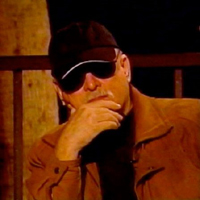 J Bartell was a behavioral expert/lecturer and chief of staff of a large California-based clinic/teaching Institute while in his mid-30s. His clients at the institute included people from all walks of life, but it was his worldwide travels on behalf of affluent, private clients, including heads-of-state, that put him on the radar of CIA contractor Chauncey Holt. Holt thought Bartell’s behavior modification process would be helpful to a field asset in need of passing a polygraph. Courier work for the CIA, transporting documents and such, would soon follow.
J Bartell was a behavioral expert/lecturer and chief of staff of a large California-based clinic/teaching Institute while in his mid-30s. His clients at the institute included people from all walks of life, but it was his worldwide travels on behalf of affluent, private clients, including heads-of-state, that put him on the radar of CIA contractor Chauncey Holt. Holt thought Bartell’s behavior modification process would be helpful to a field asset in need of passing a polygraph. Courier work for the CIA, transporting documents and such, would soon follow.
In the course of his roughly ten years of work in special ops, J experienced many life-threatening events and he was often called upon to use his therapeutic skills to aid both himself, his partners and other assets in the field.
After his first few assignments, J Bartell got caught up in government intrigue far beyond what he expected. The work eventually lead to him becoming part of a small group that handled off-book assignments that became known to insiders as “The 231 Club.”
This group was an extension of the CIA’s black ops division referred to as Executive Action which was created in the 1950s. J Bartell essentially worked for Holt who was his “handler.” Holt, in turn, reported to higher-ups within the network. At one time Holt was working and reporting to such people as Phillip A. Twombly, who was Vice President of Coca Cola’s Caribbean operations.
Its members, which also included Michael Harries – originator of the famed Harries Flashlight Technique – went to other countries to train private armies and guerrilla forces in the techniques and tactics they were instrumental in developing which are now used worldwide by military and police forces. J Bartell used the therapy techniques he created to help people in the field control blood flow, pain and fear, among other things.